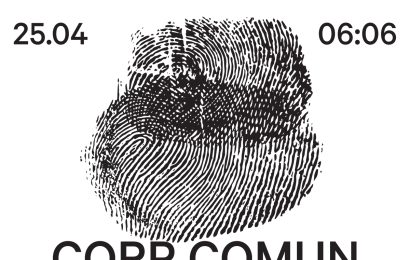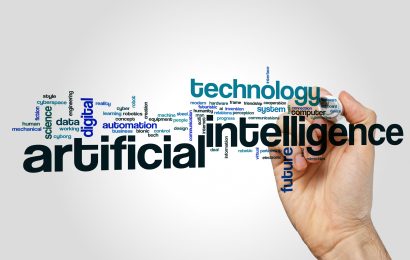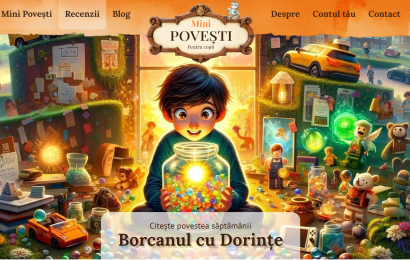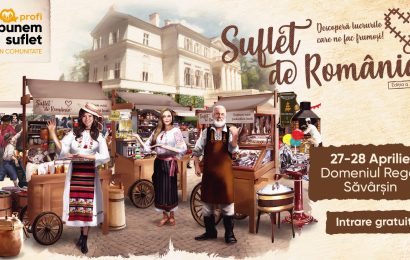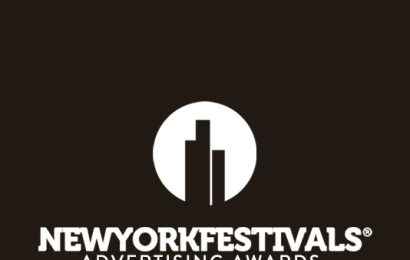Anthony Baker: Digital is just a canvas where you tell a story
Since joining R/GA London in 2011, Anthony Baker, Technology Director, has been promoting modern development practices through fast-paced and highly productive creative prototyping, which are changing the way digital solutions are scoped, created and delivered. Additionally, he also leads the R/GA London’s Lab, where digital interactions are explored in the physical space, providing an ideal space for new business and client strategy conversations. During his time working at R/GA, Anthony has been part of several cutting-edge, award-winning projects for brands like Beats By Dr. Dre, Google, BBC, Nokia & Microsoft, Ray-Ban and Telefonica O2. AdHugger met him while in Romania and brought you an exclusive interview about innovation, technology and creating experiences.

AdH: How do you see R/GA among the other digital agencies you are competing against in the market? What is your unique positioning?
Anthony Baker: R/GA is more than a digital agency. I think we try to create experiences across product development, communication and campaigns, as supposed to just create advertisement. Is more about helping brands to create meaningful experiences, that just change the way people experience brands. We have quite a wide spread of verticals and different disciplines that we combine in a real cohesive and integral way, to make sure that whenever we work with a client and we create a solution, it’s a solution that is looking at the big picture. And what is the evolution of that. As supposed to just saying that we are going to do a campaign or an ad.
For us, the creative core is not just an art director or a copywriter. It’s about strategy, it’s about technology, about the science, about copywriting, about production, etc. Mixing all these disciplines as a core creative experience gives us the opportunity to see what is beyond just a campaign or an ad. We try to use technology whenever, use the sign and copywriting whenever the content is right and try to create that kind of experience that connects and brings brands way closer to people.
AdH: How is the process exactly for a client coming to you? How does all of this apply to him?
A.B.: It changes a little bit from client to client, but we like to work really close with the client, in a way that we co-create and collaborate quite closely for the solutions that we do. For example we have been working for Google from the very first day of the partnership, on all of its disciplines, come up with the ideas, get feedback from the client and work on it right away. Not doing something creative, getting feedback, going away and then coming back, etc. We do that every day, involving all the ideas coming from everybody in the team and so we would get the best out of what the client thinks is right and what we can bring to the table.
We are using prototypes rather the powerpoints. We would have a client come in at the different stages of the process, show him the development. So, literally, the clients are with us right from the start and during all the creation process and getting involved in the creating of the prototype with us.
We like to help clients do and then talk about it. We also try and see what resonates with consumers, with people in real time, give the project a human centric aspect, using data in a way that drive experience in a meaningful way. We also like to do the stuff and demonstrate what could work or couldn’t work.
It’s more of a partnership relationship rather than a provider / beneficiary type of relationship and that is what drives innovation at the end of the day. It’s the best type of relationship and the one that you rarely get.

AdH: I am sure you are trying to bring the same structure and ideas of work in Romania, as well. How hard is it to convince the clients?
A.B.: The way that R/GA expands to other countries is a very organic way. Apposed to acquiring other local companies, we bring people from other offices to kind of, organically, grow the office. And that process takes time. But we are making sure that the people going to a new country are part of the culture of R/GA , so the end result is the work is having the R/GA ’s emblem.
It’s a fine balance and we are trying to make sure of that, because we also want to keep the culture of the local offices we are opening. Many USA agencies are opening an office somewhere and that can be like a satellite US office based in South America or Africa or Europe. But we really encourage the culture and keep the agency’s DNA of innovation.
AdH: You are talking a lot about innovation. How much are you investing every year in innovation a new technology?
A.B.: We invest quite heavily in trying to make sure that whenever we are working for a client we are trying to see the possibility of innovation. Prototyping is one way that we are doing it. We are actually investing proactively, trying to show the client something beyond a powerpoint: how our creative idea is working (a mobile application, a website, a retail event or a whole user journey, etc). We are putting technology and creative to work in order to show the client how the idea can evolve and how are the mechanics and if it really works, etc. That is an investment.
We are also having dedicated spaces (New York, Buenos Aires, London, etc) in which we are trying to show how technology plays a role in the physical space and how people interact with the technology. Lots of the times we’ll create something and assume people will use it in a certain way and, as soon as you put it in the hands of people (especially if it’s retail or physical spaces) you realize that the interaction is quite different. And that’s because the way people react to experiences is quite different, so we dedicate a lot of time to that aspect. It serves as a conversation’ starter, so for us is way easier to talk to clients. In a place where we actually show the way you can do things and the way that you shouldn’t do things.
We also train people, we make sure we are on top of the trends from a creative and copywriting standpoint. We go to quite a few conferences, we write a lot, we try to work with partners and big companies, like Google and such, to make sure we know what things are coming and new ways of doing things.
Clients come to us and look at us like they do look at an innovation company. We are quite lucky with the briefs that we get in, with clients asking for transformative-innovative ways. And that exactly from the start. I think that people are realizing more and more that is not only about being just a simple social campaign or just a website, etc. You are investing in building a web experience, a mobile app or an event. But you also wonder what is after that? How do you keep going that conversation? How do you keep growing that relationship between the brand and its consumers? And I think that R/GA is in a really good position of helping clients bringing that strategy across various aspects of it, whether that is social, or web, or PR, or print, or even product development, which is something that we have done too.
AdH: You said earlier that there is a difference between how you have expected people to react to a certain thing and how they have reacted in reality. Can you give us an example or two?
A.B.: Something we have tried in retail. You have experiences that are supposed to attract people, so you can tell a story, you can tell them about your product or services, etc. There are a lot of cases in which people would just play a tv ad and we know for a fact that if you place a tv ad it doesn’t work. You need to attract in a very simple way. To first grab the attention and establish the connection in that moment. For example the technology using gestures recognition. Clients love it, they want to do their signature sign (e.g. a girl does a certain gesture and that will trigger a certain reaction), but this thing doesn’t work like that. Actually, for the person doing that it can prove to be really hard and exhausting and he gives up. So, even the client really wants that the consumer would do a certain action, when he tries for himself, he realizes how hard and unpractical that is and why after some seconds anyone from its target group would just simply give up, as he did.
Unless you are playing a game at home and you are really into it, people won’t take any time whatsoever to learn how to drive an experience through gestures and it’s really tireing. These are the things that we need to test. Everything that has to do with spaces and screens and how do you create special communication you have to taste it. Because people have a really short attention span, one that is getting more or more reduced by us spending so much time in front of the mobile or the tablet. For brands to catch the attention and be able to tell a compelling story you have a very tiny amount of time to do it. Which means you have to be very straight forward, very simplistic and to communicate the story in a very short and easy way.
Also be extremely relevant. Is not about what you want to say to the consumer, but about saying something that is relevant to him. And has to do with your product and your services.
People talk a lot about digital: digital strategy, digital content, but digital is no longer A THING. It used to be the Internet, now is not. Digital is a landscape. Because the proliferation of devices and the super-low cost access to it, it means that especially for younger generations digital is just an intrinsic part of the everyday life. Digital is just a canvas where you tell a story. And that story needs to be culturally relevant. In order to do that you have to be useful (to give value), you have to accurate (because there is such a huge flow of information), it needs to be relevant, respectful about what people want to know and when they want to know it (and I think that is a really important aspect) or when they want to interact with the brand. Basically, you need to create contextual experiences. That gives you to the right message, at the right time, at the right place.
At the end of the day what we want from a brand perspective and a client perspective is to have a one-to-one relationship. That’s the goal, the wholly grail. “We want to talk to you, not to everybody. And we want to allow to YOU to talk to us”. That is really hard to do and we are not there yet. But we are making the progress to get to that place.

